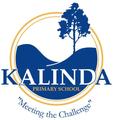Principal's Report

As a school it is crucial that we are always analysing academic and wellbeing performance, planning for improvement and working hard to implement any changes required to achieve this improvement.
Over the last few weeks, our school’s Wellbeing Leaders (Mel Tattersall and Bron Steele) spent a day with me developing a 2 year well-being plan for Kalinda PS. Also our School Improvement Team (Shaun McClare, Lauren Hopkins, Dani Thomas, Michelle Anderson, Jess Swingler, Chelsey Lloyd, Bron Steele and Mel Tattersall) spent a day developing improvement plans for 2019 and 2020 for Writing and Numeracy.
In these plans we Evaluate and Diagnose where we are currently at, we Prioritise and Set Goals we want to achieve, we Develop and Plan our strategies to reach these goals and then we set parameters to Monitor the Implementation of them. The School Improvement Team then meets every 3 weeks throughout the entire year to monitor progress, make adjustments and discuss the next steps in improvement in that area.
The work in these plans is translated directly into our school’s Annual Implementation Plan, and is reflected in the goals that teachers set in their Professional Development Plans. These plans for teachers allow them to set their own goals for improvement in their own practice that will contribute to achieving school-wide improvements.
Please find attached below our 2 year Well-being Plan. The Well-being plan focuses on staff and student well-being. As an organisation it is crucial that we value the wellbeing of all staff members and without a doubt, improving their wellbeing has a direct impact on the wellbeing of our students.
I will share the Writing and Numeracy Improvement Plans in the next newsletter after we have the opportunity to include 2019 NAPLAN data into them.
Throughout this work and through my own observations at Kalinda, it is clear to me that there is some room for growth. We have a great school culture and an incredibly talented group of staff members. The talent of our staff is broad and diverse and they show an incredible amount of care for the students and work incredibly hard to deliver high quality teaching and learning.
However, there are always things we can do with our practice, resources and structures that will enable our staff to apply their talent and work ethic more effectively in order to achieve better outcomes in wellbeing and academic achievement.
Some of these changes will include a significant increase in resources being allocated towards staff professional development, further resourcing teachers with materials and reference texts and providing more time for our middle leaders (Learning Specialists) to work side-by-side with teachers to coach, provide feedback and support planning.
The other crucial thing we can do is provide the best possible structure to allow for high quality teaching and learning. At the moment, our class structure (Foundation, 1/2, 3/4 and 5/6) means that we have teams of teachers who are not located together geographically within the school and the teams are also too large to work together in the most effective way. Our largest team (1/2) comprises of 9 teachers (8 classes)
From experience, it is clear that teams in school work most effectively when the following parameters are met:
- They are small enough to know all of the students in their team very well
- They can meet as an entire team during the day (during Specialist classes)
- The team is small enough that everyone has a voice and there is a great sense of collective efficacy
In 2020 we will be moving to a straight class structure as this means we will have teams of 3-4 teachers per level. These teachers will then be able to be located together in the one space, they will have planning time together during the day, they will be able to share strategies and advice about each individual student and they will have a much more intimate knowledge of the students in their year level.
There will still be connections between Yr 1 and Yr2, Yr 3 and Yr 4, and Yr 5 and Yr 6. Whilst the individual year level teams will meet together during the school day to plan for Numeracy and Literacy, the larger composite teams will meet together to plan for humanities subjects and CBL projects. The students will also have the opportunities to occasionally work between levels for these learning areas.
Camps, inter-school sports and other activities that happened at a composite level will continue to take place at a composite class level.
This structural change has been discussed at length with staff and we have looked at the ‘pros’ and ‘cons’ of the change to our structure. We also understand that there are students who had really looked forward to being in class with peers from another level for next year. However, the overwhelming need to improve the performance of our academic and well-being outcomes and the way that smaller teams of teachers can enhance this, made the decision very clear to us.
Under the structure we have developed, there will be 25 classes, with a class average size of 23 students per class and class sizes of between 20 to 25 students (based on our current enrolments for 2020).
2020 Class Structure | |
Year Level | Number of classes |
Foundation | 4 |
1 | 4 |
2 | 4 |
3 | 3 |
4 | 4 |
5 | 3 |
6 | 3 |
We are kind. We are resilient. We are respectful.
